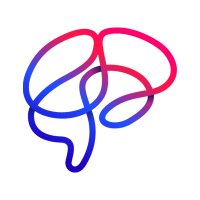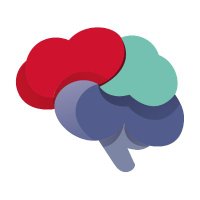
We don't even fully understand the brain of a worm, let alone the human brain. #Neuroscience has come a long way, but there are still so many unsolved mysteries about the brain. #BrainWeek

Thank you to all the Brain Awareness Week organizers around the world for your commitment to sharing brain science with your communities. We’re already looking forward to #BrainAwarenessWeek 2025! #BrainWeek

How do you treat encephalitis?
During #BrainAwarenessWeek we will be sharing information about encephalitis, its causes, symptoms, how it is diagnosed and more.
#BrainWeek

What makes the human brain unique?
Most diseases of the human brain are only seen in humans. By understanding what makes the human brain different, we can understand more about these unique diseases.
#studyBRAIN #BICCN #BrainWeek

How do different brain regions connect and communicate? 👀 Look in the labs to see how our scientists are 3D imaging brain tissue in high resolution.
#BrainWeek

Plaques?! Tangles?! Brain shrinkage?! Alzheimer’s disease wrecks havoc on the brain, but what even is #Alzheimers ? 🤔 Scientist Kyle Travaglini breaks it down for us in our premiere episode of ✨ Basically Science ✨. #BrainWeek #EndAlz

Freely access electrophysiological, morphological, and transcriptomic data measured from thousands of individual mouse & human brain cells via the Allen Cell Types Database: celltypes.brain-map.org | #BrainWeek #NeuroTwitter

What brain cells are impacted in diseases like Alzheimer’s?
Together with diverse teams around the world, we are mapping the human and non-human primate brain to better understand what goes wrong in disease.
#BrainWeek #studyBRAIN

To understand the brain, we must first understand its parts — the cells. Together with dozens of #BICCN -supported teams, we're cataloging cell types in the brain and building the most detailed map of the motor cortex ever. #studyBRAIN #BrainWeek

Your neurons are helping you scroll Twitter, but do you know what they actually look like? Researcher Julia Andrade breaks down their major parts and why their shapes are not just mesmerizing, but also important for #neuroscience research! #BasicallyScience #BrainWeek

Meet the ⚡️ excitatory neurons ⚡️ in our premiere episode of #BrainBasics !
#BrainWeek Dana Foundation🧠

Not all neurons activate other neurons. In our latest #BrainBasics , we meet the inhibitory neurons and learn why they are so important to healthy brain functioning.
#BrainWeek Dana Foundation🧠

'I think about the impact that my work is going to have on my loved ones.' Stowers Investigator, Halfmann Lab, discusses his lab's research that could impact diseases like #Alzheimers , Parkinson's, and Huntington's. Learn more: bit.ly/3yyaz3Z
#StowersImpact #BrainWeek

Neurons may have a lot of #BrainWeek spotlight, but you should also get to know one of the unsung heroes of your brain - glia!
#BrainBasics Dana Foundation🧠

Lights, camera, action potential! 🧠⚡️
In this episode of #BasicallyScience , explore how neurons talk to each other using their own chemical language and how we can eavesdrop on them. 👀
#BrainWeek #SciComm Dana Foundation🧠

There are plenty of ways to participate in #BrainAwarenessWeek to help spread awareness and enthusiasm for #neuroscience . Watch and learn more about this annual campaign and join us March 11-17! #BrainWeek

To understand the brain, we must first understand its parts — the cells. Our scientists together with dozens of #BICCN -supported teams are cataloging cell types in the brain with the most detailed map of the motor cortex ever. #BrainWeek #NeuroTwitter

There's every reason to believe that #Alzheimers disease has roots in specific brain cell types. That's why together with collaborators UW Medicine & KP WA Research – with USBrainAlliance support, are taking a new approach, cell by cell, to understand the disease.
#BrainWeek

Examine multimodal data from thousands of cells across 3 mammalian species with the Cell Type Knowledge Explorer, an #openscience resource developed with #BICCN and supported by
USBrainAlliance. #BrainWeek
